- Home
- Paul Christopher
The Lucifer Gospel fr-2 Page 6
The Lucifer Gospel fr-2 Read online
Page 6
“I wonder what Deir el-Shakir means,” said Finn, taking a sip of her iced tea.
“Monastery of the Skull,” supplied Hilts. “The skull in question was supposed to have belonged to St. Thomas the Apostle. That’s what the Copts meditated on here. There’s also a theory that the skull was made of crystal, like that Mayan one, except the skull here was supposedly that of Baphomet… the Knights Templar version of Satan. Spooky if you’re a fan of that kind of thing.”
Finn laughed. “You’ve been watching X-Files reruns, haven’t you?”
“If you’ll follow me, please,” murmured Farag, their steward.
And they did.
12
True to Adamson’s word, Finn’s luggage had been delivered to her quarters in the residence quadrant, a long domed yurt like the others but with individual rooms jutting out from the main tent like the legs of a centipede. By her count there were twenty-five of these cells, each one equipped with electricity, a gravity-fed water tank, and a small chemical toilet cubicle. The quarters also had a smaller version of the triangular windows in the recreational area. She had a camp bed with an inflatable mattress and matching pillow, a tubular steel and plastic desk, a lamp, a Local Area Network Internet connection for a laptop, and a chair. She even had her very own air-conditioning duct. For communications there was a headset Motorola ten-channel walkie-talkie outfit with a five-mile range and a buzzer system for calling a steward if necessary. Everything she needed to know about the site from a plan of the “moon base” to instructions for flushing the chemical toilet was contained in a loose-leaf binder lying on her bed. Adamson had clearly spared no expense, and Finn found herself wondering what he was hoping to get for all his money. It seemed like overkill for a few Coptic inscriptions, since according to Hilts the monastery was far from a newly discovered site.
The evening meal was held in the dining hall, a large yurt like the recreation area with two dozen tables, including a large one for the actual staff in an area separated from the rest of the tables by a high, white nylon barrier. Finn found herself seated between a ceramic expert from the Royal Ontario Museum named Adrian March and Hilts. Adamson sat at the head of the table beside a small dark man he introduced as Mustapha Hisnawi, their liaison with the Libyan Office of Antiquities. Directly across from her was Fritz Kuhn, the heavyset man Hilts had said was the grandson of Hitler’s archaeologist. Beside him was Laval, the monk from l’Ecole Biblique in Jerusalem. The meal was a variety of Libyan dishes, lamb, chicken, and vegetarian. The conversation was mostly about the dig and mostly technical. Finn waited for an opportune moment and finally managed to ask her question.
“Is there any real focus to the dig?” she said. Across from her the German, Kuhn, frowned. Adamson just shrugged.
“Does there have to be a focus?”
“Usually for a project like this you’d expect some sort of ultimate goal.”
“What would you know about projects like this,” Kuhn snorted, digging around at the sauce-covered lamb and rice on his plate. His face was flushed. He picked up his wineglass and drained it. A steward appeared at his back and refilled it from a cloth-swathed bottle. Finn ignored Kuhn’s rudeness and waited for Adamson’s answer.
“Archaeology is a science of small increments, Ms. Ryan. The man seated beside you, young Dr. March, will spend several years collecting enough pieces from a shattered pot to make a reconstruction, and even then it will probably not be complete. But completeness is not the goal, is it, Adrian?”
“Dear me, no,” said the slim, fair-haired man with the thick glasses who sat on her left. “One looks for trends, points of comparison. Complete reconstructions aren’t necessary to know what one is dealing with.”
“There you are, Ms. Ryan. Our overall goal here at Deir el-Shakir is simply to add to the sum total of what we already know. This is not Howard Carter uncovering King Tut’s tomb, or a French captain of engineers discovering the Rosetta Stone as he prepared to blow up a bridge. Nothing that would be worthy of the CBS Evening News, believe me, not even Larry King.” He laughed. “This is simply the basic gathering of knowledge so that we have a better picture about the past.”
“Trudging in the fields of academe, tilling the soil of history, that kind of thing?” Hilts quipped. He picked up a chicken bone on his plate and sucked off a remaining piece of meat. He dropped the bone back on the plate, then wiped his hands on a napkin.
“Something like that, Virgil,” Adamson said with a nod.
“Just Hilts, if you don’t mind. Just Hilts.”
“As I understand it, Deir el-Shakir was originally founded by St. Thomas the Apostle,” said Finn, remembering what Hilts had told her.
“A myth,” Laval answered from the opposite side of the table. “Historically St. Thomas is presumed to have gone in the opposite direction, to India. Deir el-Shakir was born out of what is usually referred to as the Arian heresy, Arius being a well-known monk from Libya. He preached that Christ was not divine, but mortal, and merely a prophet; it is probably this doubt about Christ being the true Son of God that suggested the link to Thomas, a man given to the same sort of thinking, ergo the nickname ‘Doubting Thomas.’ The monks here were followers of Arius, but I’m afraid St. Thomas was not among them.”
“And the skull?” Finn asked. She turned to Adamson, trying to gauge his reaction.
“What skull would that be?”
“I think it’s called the Skull of Baphomet,” said Finn.
Adamson burst out laughing. Laval smiled broadly. “I’m afraid you’re getting your Knights Templar fantasies mixed up,” Adamson said, grinning. “Just because a book is on the New York Times Bestseller List doesn’t mean it’s true, especially if it’s on the fiction side. What you’re talking about is the supposed flight of Nicodemus and Joseph of Arimathea to England. The head on the shield of the Templar Grand Master was a representation of the skull of one of the earlier French knights named Hughes de Payen… who lived about seven hundred years after the monks here were already dust.”
“You know a lot about the Templars,” said Hilts quietly.
“I know a lot about a lot of things,” answered Adamson. Dinner went on for a little while longer and then people began excusing themselves. As Hilts stood to go he whispered in Finn’s ear.
“He’s lying. There’s something else going on.”
Finn didn’t answer. She looked down the table at Adamson, who was lost in conversation with the Libyan liaison officer, Hisnawi. Suddenly the expedition leader turned and stared down the table at her. The glance was utterly cold and without emotion. She held his hawklike gaze for a second longer, and he finally looked away. Finn stood up and shivered. If looks could kill she’d be a corpse. The expression had been exactly the same as the one on the killer’s face in the City of the Dead.
13
“I’ve been here for two weeks and there’s been nothing out of the ordinary,” said Finn. She and Hilts were in the dining room on a coffee break. For the past two weeks they’d barely exchanged a dozen words. Hilts had flown a seemingly endless series of flights charting a low-altitude grid around the dig site and Finn had made exact drawings of a seemingly endless series of pottery shards. “Maybe Adamson really is operating on the up-and-up.”
Hilts pulled a face. “I don’t have to remind you about what happened in Cairo.”
“Which might have had more to do with you than me.”
Hilts sighed. “You don’t really believe that, do you?”
“If Adamson was out to kill me, why would he have wanted me on the expedition staff in the first place?”
“Keep your friends close but your enemies closer, as the Godfather once said.”
Finn laughed. “I think the quote is actually Sun Tzu from The Art of War, but I get your point… only how did I get to be Adamson’s enemy?”
Hilts played with the lip of his coffee cup. “I’ve spent a fair bit of time thinking about that. The only thing I could think of was Mickey Hearts.�
�
“I wish you wouldn’t call him that.”
“Sorry… Mr. Valentine. Anyway, he’s the only thing that makes sense, the only connection.”
“How do you figure?”
“He got you the job, didn’t he?”
“I like to think my qualifications had something to do with it.”
“No offense, sweetheart, but there’s a lot of technical illustrators out there with a lot more experience than you. And how did you hear about the job in the first place?”
“My faculty advisor told me about it.”
“How did he know about it?”
“He said he had a friend who told him about it.”
“Check it out. I bet you’ll find out that the friend in question was Mickey… your Mr. Valentine.”
“Why would Michael put my life in jeopardy?”
“Did he say anything to you before you left New York?”
“I put him down as a reference for the job. I called to make sure it was okay.”
“What did he say?”
“He said fine. He seemed to know about the job already.”
“And?”
“He told me to be careful.”
“A warning?”
“I didn’t think so at the time. I thought he was talking about foreign travel, watching out for pickpockets, that kind of thing.”
“And now?” Hilts asked.
Finn paused, thinking. Hilts started tearing little chunks out of the top of his foam cup. “Now I guess I’m not so sure anymore. It could have been a warning, but that still doesn’t answer my question. Why would he knowingly send me into danger? That is, if he got me the job in the first place, which is what you seem to think.”
“I wondered about that too. I think maybe your friend thought he was doing you a favor at first, but something changed his mind.”
“Like what?”
“Like he found out something.”
“Found out something like what?”
“Like this,” said Hilts, keeping his voice low. He reached into the pocket of his worn and faded fatigue jacket and brought out a device only a little larger than a cell phone.
Finn looked at the tiny piece of electronics. “What is it?”
“A Garmin i-Que.”
“I’m not too good at the hi-tech stuff,” said Finn. “Words that an art history major can understand.”
“It’s a GPS recorder, as in Global Positioning System.”
“I don’t get it.”
“Have you been keeping track of our esteemed leader?”
“Qaddafi? No, I’m not in the dictator’s loop.”
“Ha-ha. Adamson. Particularly Adamson and his pals Kuhn and Hisnawi, our man from Museums and Antiquities.”
“I’ve been far too busy drawing little pictures of broken pieces of thousand-year-old clay pots, which are of no interest whatsoever.”
“I’m busy flying patterns with the Polish answer to powered flight most days, which is probably just about as boring as sketching old chamber pots, but it does have one advantage.”
“Which is?”
“I’m at twelve thousand feet. I get to see a lot. Mostly sand.”
“Get to the point.”
“Every day for the last week or so Adamson, Kuhn, and Hisnawi take out one of those desert Hummers and head out into the desert.”
“How do you know it’s them?” asked Finn.
Hilts reached into his pocket again and took out a crumpled piece of photo paper. “As well as regular film cameras, Adamson uses a Belgian thing called a DIMAC… Digital Modular Aerial Camera. Like most aerial cameras it’s set to take slightly oblique images… from the side, to give shadow and scale.” He smoothed out the picture on the table. It was fuzzy, but the faces were clear. “It’s Adamson, Hisnawi, and the German, no doubt about it. I downloaded the shot onto my laptop, enhanced it and blew it up.” Finn looked at the picture. All three were visible, Adamson behind the wheel, Hisnawi on the seat beside him, and Kuhn seated in the back. Something was in the truck bed, covered with a tarp.
Finn shrugged. “So what? Hisnawi, Kuhn, and Adamson go for rides in the desert, what’s the big deal?”
Hilts prodded the little GPS device. “I managed to slip this behind the spare tire of Adamson’s personal Hummer, the yellow and black one that looks like a giant bumblebee? They go to the exact same coordinates every time.”
“Where?”
“One hundred and eight miles almost due west of here.” He punched a button on the device to retrieve the numbers. “North twenty-one degrees, fifty-two minutes, and thirty seconds by east twenty-three degrees, thirty-two minutes, eighteen seconds, to be absolutely precise.”
“What’s there?”
“Absolutely nothing.”
“Be logical, Hilts, there has to be something there or they wouldn’t be going.”
“According to the charts it’s at the edge of a small plateau. If the sky were red you could be on Mars. Rocks and sand.”
Finn sighed. “Mars has an atmosphere. The sky is actually blue.”
“Sorry, Dr. Ryan.”
“I had to take a couple of straight science courses. One of them was astrophysics.”
“The point is, there really is nothing there. I even checked to see if it was on one of the old caravan routes. Nada. Just more rocks and sand until you get to the Algerian border.”
“What happens then?”
“You get Algerian rocks and sand instead of Libyan rocks and sand.”
“You really are a pain, you know that, don’t you?”
“It’s a gift.”
“What do you think is out there, Hilts?”
“I think they found what they were actually looking for.”
“Which is?”
“Only one way to find out.”
14
They flew over the endless desert, heading west, seeing nothing. The cockpit of the little high-winged aircraft was cramped and the rear two seats had been replaced with a variety of bulky camera equipment and a long-range fuel tank to give the pilot the extra in-flight hours needed to fly large-scale grid series.
Finn stared out through the large side window. “You were right,” she said. “Absolutely nothing. More rocks than sand, I’d say.”
“It’s more hamada than erg.”
“Easy for you to say,” Finn said and laughed.
“Hamada is a rocky desert, an erg is one made up of dunes. Out here the hamada usually is a function of altitude. The higher the elevation the stonier the ground. Mind you, it hasn’t always been this way.”
“It looks like it’s been this way since time began.”
“Probably less than four or five thousand years. You mentioned the English Patient a while back… remember the Cave of Swimmers?”
“The cave that Almasy found.”
“It’s real. And they really are swimming. The actual cave is at a place called Wadi Sora in Egypt. Five thousand years ago there was no desert here, just hills and plateaus and rivers and lots of animals. Think about all those lion safari movies you’ve seen and you’ll have it right.”
“Hard to believe.”
“That’s what they used to say about global warming too. Take it back far enough and you’ll find that all that sand started out on the Atlantic beaches in Morocco. When we get back from our little spy mission I’ll show you some infrared satellite images that’ll knock your socks off. You can still see the markers where the old rivers used to flow, enormous ones that used to irrigate the whole of northern Africa.”
“Maybe that has something to do with what Adamson and his pals are after, some kind of site like the Cave of Swimmers?”
“Zerzura, that old fantasy? I doubt it very much. He has aspirations as an archaeologist, not as a paleontologist, and I don’t think Brother Laval, our cheerful monk from Jerusalem, cares much about cave art.” Hilts shook his head. “No, I think it might be something from the war.”
“Which one.”
“World War Two. It would explain Kuhn’s involvement.”
“But why?”
“This whole area was crawling with Germans, Brits, and Italians during the early part of the war. There was also a lot of Italian activity even before that. Pedrazzi, the Italian I told you about, was a well-known archaeologist, but he could have been a spy too. Just about everybody was back then.”
“Things don’t seem to have changed much,” said Finn dryly.
“We’re not really spying, we’re just satisfying our curiosity.”
“That’s what got the cat in trouble, as I recall.”
On the horizon a darker line began to grow, slowly resolving itself into a rough, lifeless plateau of rock, cracked and broken into a thousand narrow valleys and trackless canyons leading nowhere. Hilts had used a smart cable to plug the cell-phone-sized GPS locater into the larger version on the airplane’s instrument panel. As they approached the plateau he scanned the color display, watching the readout and adjusting the plane’s small, doughnut-shaped control wheel, making small adjustments to bring them to the exact coordinates.
“Almost there,” he muttered, veering slightly to the right. “See anything?”
“Not yet.”
“I’m going to take it down.” Hilts dropped the nose and the small plane responded almost instantly, gliding downward so smoothly it seemed to Finn that they were sliding along some invisible wire. Whatever else Hilts was, he certainly knew how to fly, she thought. She stared out through the side window and then she saw it, almost directly under them.
“There!”

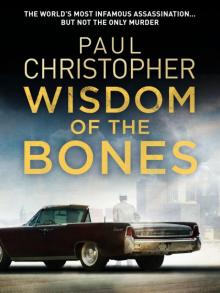 Wisdom of the Bones
Wisdom of the Bones The House of Special Purpose
The House of Special Purpose The Second Assassin
The Second Assassin Michelangelo's Notebook
Michelangelo's Notebook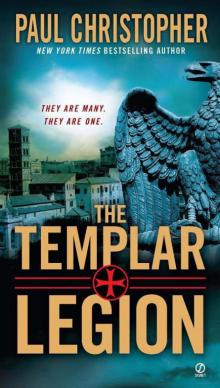 Templar Legion
Templar Legion The Sword of the Templars t-1
The Sword of the Templars t-1 Red Templar
Red Templar The Aztec Heresy
The Aztec Heresy The Templar Legion
The Templar Legion Rembrandt's Ghost
Rembrandt's Ghost Sword of the Templars
Sword of the Templars The Templar throne t-3
The Templar throne t-3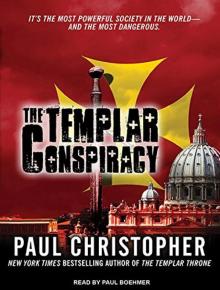 The Templar Conspiracy
The Templar Conspiracy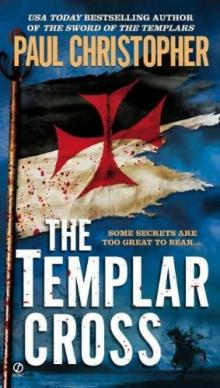 The Templar Cross t-2
The Templar Cross t-2 The Templar Legion t-5
The Templar Legion t-5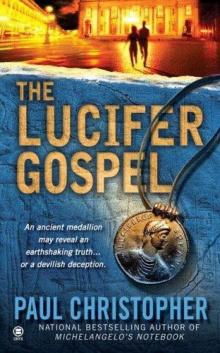 The Lucifer Gospel
The Lucifer Gospel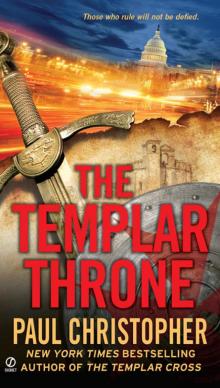 Templar Throne
Templar Throne Michelangelo_s Notebook fr-1
Michelangelo_s Notebook fr-1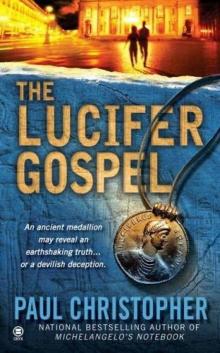 The Lucifer Gospel fr-2
The Lucifer Gospel fr-2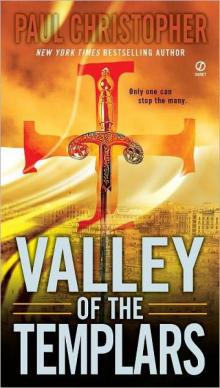 Valley of the Templars ts-7
Valley of the Templars ts-7 Valley of the Templars
Valley of the Templars Templar Cross
Templar Cross The Templar Throne
The Templar Throne The Templar Cross
The Templar Cross Lost City of the Templars
Lost City of the Templars The Templar conspiracy t-4
The Templar conspiracy t-4 Templar Conspiracy
Templar Conspiracy